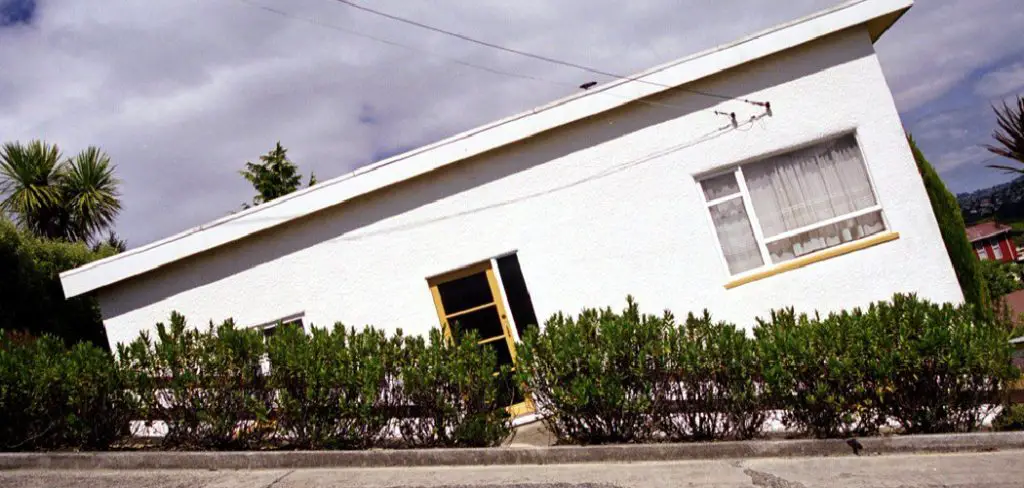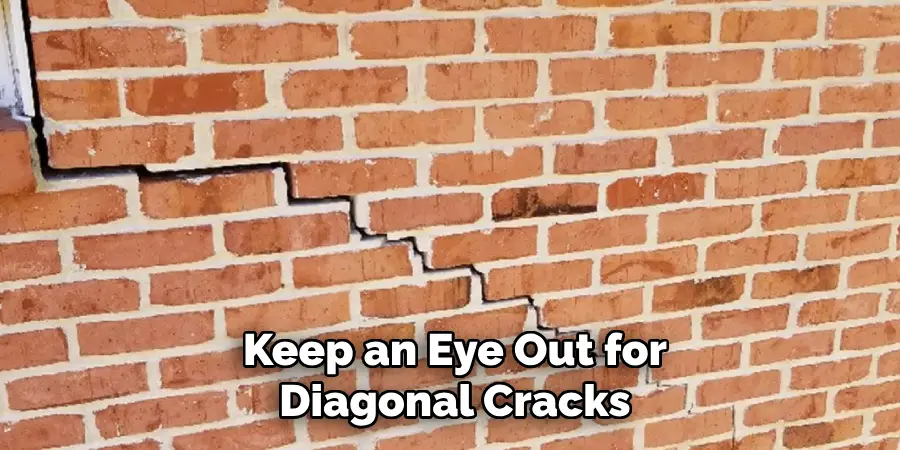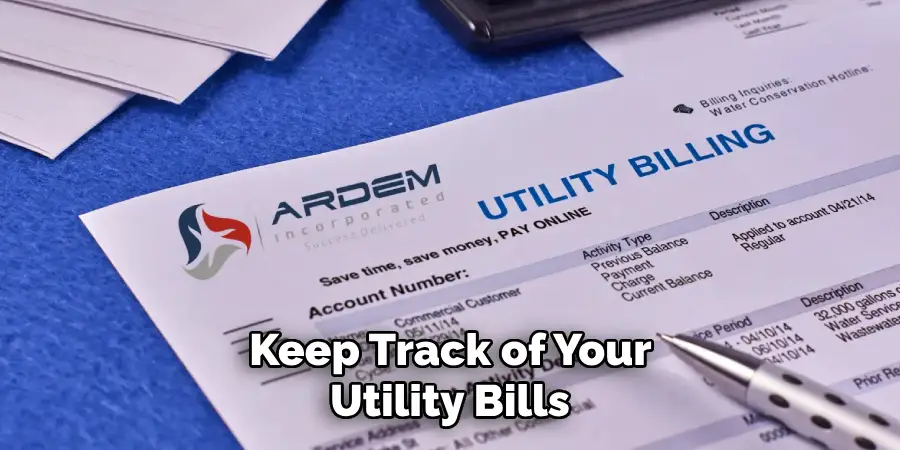Are you concerned that your house might be sinking? As a homeowner, this is one of the most horrifying prospects to consider. Unfortunately, there are many factors that can contribute to destabilizing foundations and shifting soils, leading to an ever-growing list of risks for damage or even structural collapse.

If you suspect your home may be in danger of sinking, don’t wait for things to get worse; act now and learn how to identify if your house is at risk and what solutions are available.
In this blog post, we will discuss the common signs of how to know if your house is sinking as well as key preventive measures you can take today. Read on to better understand how preventative maintenance and early detection can help protect against costly repairs down the road!
9 Best Ways on How to Know if Your House is Sinking
1. Cracks in the Walls and Floors:
Cracks in walls, floors, or ceilings are one of the most obvious signs that your house is sinking. These can range from small hairline cracks to larger, more prominent ones. You may also notice unevenness or sloping in floors and walls that were previously straight. The presence of cracks indicates that the foundation is shifting and needs to be addressed promptly before the damage worsens.
2. Doors and Windows Not Closing Properly:
If your doors and windows are suddenly difficult to open or close, it could be a sign that your house is sinking. As the foundation shifts, doors and windows can become misaligned, making them challenging to operate. This can also cause gaps around the frames, leading to drafts and potential water damage.

3. Uneven or Sloping Floors:
Have you noticed that your floors are no longer level? This can be an indication of foundation issues, especially if the slope is significant enough to notice when walking across the room. If your home has a basement, check for any signs of bowing or bulging walls as well. These are all signs that the foundation is shifting and needs to be addressed.
4. Visible Gaps Between Walls and Floors:
In addition to cracks, keep an eye out for any visible gaps between walls and floors. These can appear as small openings or separations between baseboards and flooring or walls and ceilings. If you notice these gaps, it could indicate that your foundation is settling or shifting, leading to potential structural damage.
5. Leaning or Tilting Chimney:
A leaning or tilting chimney is a clear indication that your house is sinking. As the foundation shifts, it can cause the chimney to become unbalanced and pull away from the rest of the structure. If you notice any visible movement in your chimney, it’s essential to address the issue promptly before it causes further damage.

6. Sagging Roofline:
Another sign of a sinking house is a sagging roofline. You may notice dips or depressions in the roof, which can be caused by the shifting foundation. This can lead to water pooling and potential leaks, creating more significant issues over time. If you notice any changes in your roofline, it’s crucial to have a professional inspect it for potential sinking.
7. Water Pooling Around the Foundation:
Excess water around the foundation can cause soil erosion and weaken the foundation, leading to sinking. Keep an eye out for areas of standing water or pooling near your home’s base, especially after heavy rainfall. If you notice any of these signs, be sure to address the drainage issues and consider waterproofing solutions for added protection.
8. Cracks in the Exterior Brick or Stucco:
Just like cracks in walls and floors, visible cracks in exterior brick or stucco can also indicate a sinking house. These materials are often used on the exterior of homes but can quickly crack if the foundation is shifting or settling. If you notice any significant cracks in your home’s exterior, it’s essential to have a professional assess the situation and provide solutions.
9. Sinkholes in Your Yard:
If you have sinkholes appearing in your yard, it could be a sign of a sinking house. These depressions can occur when the soil beneath the foundation collapses, causing the ground to sink. If left unaddressed, this can lead to severe structural damage and pose a safety hazard. This is why it’s crucial to address any sinkholes promptly and seek professional assistance.
Following these signs, you can be better prepared to detect if your house is at risk of sinking. Remember, early detection and preventative measures are key to avoiding costly repairs down the road. If you notice any of these indicators, don’t hesitate to call a professional for assistance. Your home’s foundation is the backbone of its structure, so don’t take any chances when it comes to its stability.
So, if you suspect your house is sinking, act now and protect your home and family’s safety for years to come. Don’t wait until it’s too late! Stay vigilant and take care of your home before it sinks into danger. Your future self will thank you.
Additional Tips and Tricks to Know if Your House is Sinking
1. If you notice any cracks in your walls or floors, it could be a sign of foundation issues. Keep an eye out for diagonal cracks in the corners of walls, doors and windows that stick, or separations between walls and ceilings.

2. Look at the exterior of your house for any visible signs of sinking such as sloping floors, leaning chimney, or gaps around doors and windows.
3. Check the levels of your floors. Place a level on various spots of your floor, such as near doors and windows, to see if they are flat or sloping.
4. Keep an eye on any changes in your home’s plumbing system. If you notice any leaks or sudden decrease in water pressure, it could be a sign of shifting foundation.
5. Pay attention to any odd noises or sounds in your home. Sinking houses can create creaking, popping, or cracking sounds as the foundation moves and shifts.
6 Inspect your roof for any dips or uneven sections. A sinking house can cause the roof to dip in certain areas due to changes in the foundation.
7. Look out for gaps between walls and cabinets or countertops. These gaps can indicate that your house is sinking and causing the walls to separate from other structures in your home.
8. If you have a basement, check for any signs of water damage or moisture build-up. This could be a result of cracks in the foundation caused by a sinking house.
9. Keep track of your utility bills and energy usage. A sinking house can cause uneven distribution of heat and air, resulting in higher energy bills.
10. Trust your instincts and consult with a professional if you have any concerns about the stability of your house. It is always better to be safe than sorry when it comes to potential foundation issues.
Following these additional tips and tricks can help you identify any potential signs of a sinking house early on, giving you time to address the issue before it becomes more serious. Remember to regularly inspect your home for any changes or warning signs, and don’t hesitate to seek professional advice if needed. Taking proactive measures can save you time, money, and stress in the long run.

Frequently Asked Questions
What Are the Common Signs of a Sinking House?
There are several warning signs that might indicate your house is sinking. These include cracks in walls or floors, doors and windows that stick, uneven floors or sagging roofline, and gaps between walls and door frames. If you notice any of these signs, it’s important to seek professional help immediately.
Why is My House Sinking?
One of the most common causes of a sinking house is poor soil conditions. This can be due to factors such as excessive moisture or unstable soil composition. Other potential causes include aging or damaged foundation, poor construction practices, and natural disasters like earthquakes or floods.
Can a Sinking House Be Fixed?
Yes, in most cases a sinking house can be fixed. The solution will depend on the underlying cause of the sinking and may involve methods such as foundation repair, soil stabilization, or water management. It is important to address the issue as soon as possible to prevent further damage to your home.
How Much Does it Cost to Fix a Sinking House?
The cost of fixing a sinking house can vary greatly depending on the severity of the issue and the necessary repairs. On average, homeowners can expect to spend anywhere from $3,000 to $15,000 for foundation repair. However, costs can be higher if additional issues are found or if extensive repairs are needed.
What Should I Do if I Suspect My House is Sinking?
If you have noticed any of the common signs of a sinking house, it’s important to seek professional help right away. A structural engineer or foundation specialist can assess the situation and determine the best course of action for repairs. Ignoring the issue can lead to further damage and potentially dangerous living conditions.
Conclusion
All in all knowing how to know if your house is sinking and taking action if necessary is crucial for the safety and stability of your home.
Keep an eye out for warning signs and don’t hesitate to seek professional help if needed. With proper repairs and maintenance, you can ensure that your house remains a safe and secure place for you and your family to call home. So stay vigilant, address any issues promptly, and enjoy peace of mind in your home. Happy homeownership!
